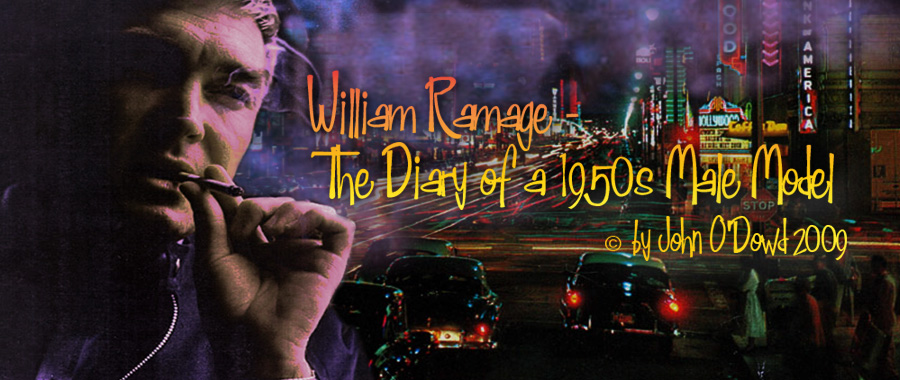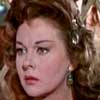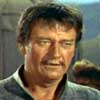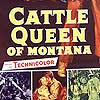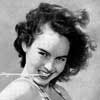| Last Update: 1/1/2009 | |
Page 2 of 6JO’D: Upon your arrival in Hollywood, you were signed to RKO Studios as a contract player. You have admitted to me that your father’s friendship with Howard Hughes, the studio’s owner, helped you land the contract. BR: Let’s put it this way—it definitely got me through the door. My weekly paycheck of $150 came through RKO’s paymaster, Mazzios Damon, but my contract was with Hughes Tool Company. That was not unusual for actors signed by Howard Hughes. Later, when he sold RKO, all the contracts were also sold—all except for Jane Russell’s, I think. Anyway, my contract was pretty standard with options every six months and a $50 a week raise after the first year. The second year the raise was $50 every six months for the next two years. It was a typical beginner’s contract. JO’D: Following your signing to RKO in 1954, you were given bit parts in The Conqueror with John Wayne and Susan Hayward, and Cattle Queen of Montana with Ronald Reagan and Barbara Stanwyck. Both these films have long been considered “turkeys”, haven’t they?
I wasn’t given any dialogue in the film because RKO was trying to rid me of my thick Texas accent. The studio sent me to work with Gertrude Fogler, the speech teacher at MGM, and she helped me a lot. My main speech exercise was “Papa put Paul on the pony in the park.” Enunciated very slowly, it was supposed to completely eliminate my Texas twang. RKO took the cost of my lessons with Ms. Fogler out of my paycheck. She once told me a really funny story about Zsa Zsa Gabor. They were working one day on speech exercises and Ms. Fogler was called away. She told Zsa Zsa to work on her “w’s.” Zsa Zsa said, “I am vorking on them!” (laughs)
JO’D: What other film and/or TV work did you do during this time? BR: All my television work came later on, in the 1960s. I did just one other film while I was under contract, An Annapolis Story, with John Derek and Diana Lynn. That wasn’t for RKO, though, that was on loan out for Allied Artists. I was in the military ball scene, and I also had a few other small scenes. RKO’s Head of Production, Eddie Grainger, had earlier sent me a memo ordering me to get a haircut for the role. He said with my long hair I looked “…too much like Veronica Lake”, so I wound up getting a flat top. I still have that memo, too! (laughs) JO’D: Who were some of the other fledgling actors and actresses who were signed to RKO at the same time you were?
JO’D: Were there any films you were up for at RKO that you didn’t get, but wished that you had? BR: There was a juvenile delinquent film called The Young Stranger that was designed to introduce James MacArthur, whom RKO had signed to a contract in 1956. I tested for the part of his best friend, however the casting director, Bill White, did not like the Hughes actors, preferring the RKO people instead. So, that was one part I had really wanted that I lost. Truthfully, RKO didn’t know what to do with me, so after a while, they stopped putting me in anything. Despite the difficulty I was having in getting decent film roles, Perry Lieber, the Head of Publicity at RKO, liked me and kept me busy in the still gallery. Ernie Bachrach was the best still photographer at any of the studios and he had noticed that I never photographed the same way. When he discovered that about me, you would have thought that he had discovered radium. He loved it! Ernie—who, by the way, also loved the ladies—suggested I should try modeling. By then, RKO was really on its last legs. JO’D: What were those last days at RKO like? BR: Bill Dozier, who later produced television’s Batman, was president of RKO at the time and he and Eddie Grainger butted heads constantly. The studio produced and released some terrible movies (I Married A Woman, All Mine to Give, etc.), and then all of a sudden production was at a complete standstill. Bill Dozier was out on his ass after a year. General Tire and Rubber Company came in and bought the studio and the new people knew nothing about making movies. It was costing far too much money for them to keep it open with absolutely no activity. In 1956, a film called The Girl Most Likely, with Jane Powell and Cliff Robertson, was one of RKO’s last productions. After that, the studio tried a remake of Stage Struck (Katharine Hepburn had won an Oscar in the original film, Morning Glory). Susan Strasberg had the lead role but the film couldn’t compete with Hepburn’s, not even with Henry Fonda as Susan’s leading man. That movie was probably RKO’s death. After it came out, General Tire made an agreement to have everything that was already completed released through Universal-International, and then we were all shown the door. Go to Page 3 of 6 |
|
Please leave a comment below. or visit my retired guestbook, to see previous comments.

